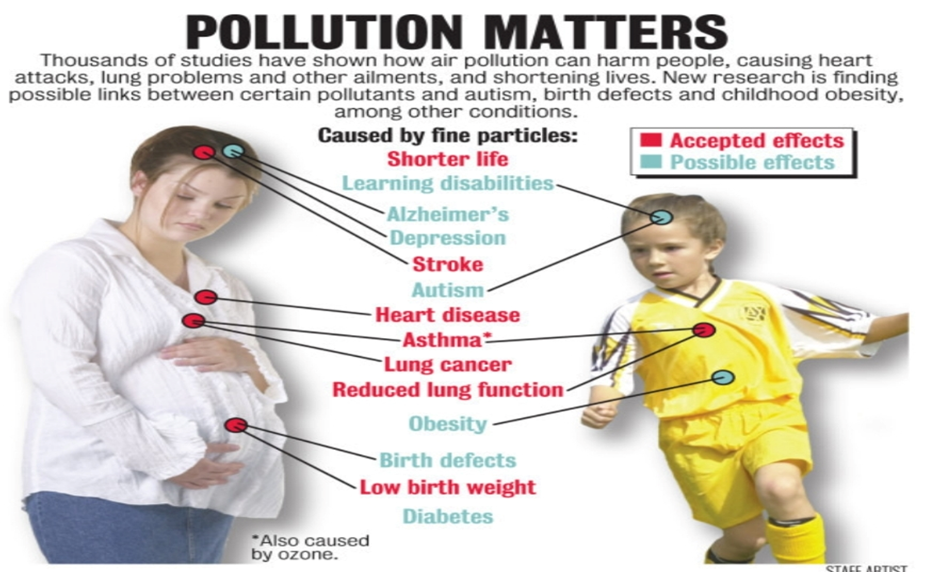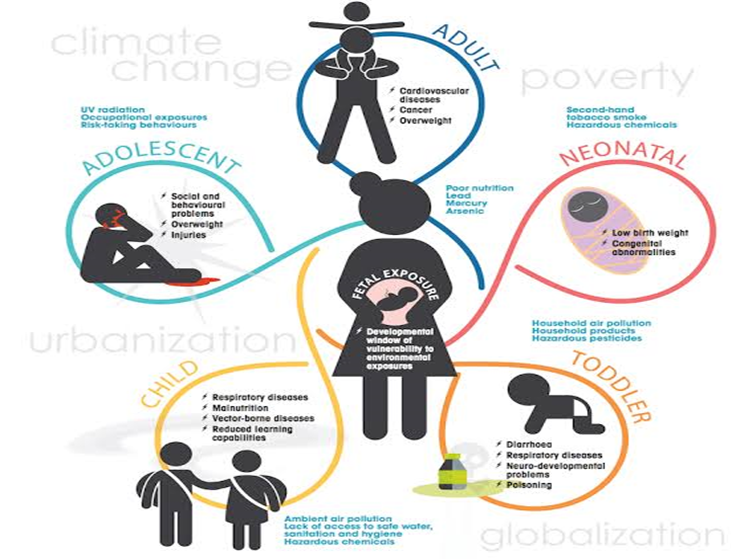EDUCATION AND POLLUTION: A CRITICAL EXAMINATION
Relevance:
- GS 2 – Issues Relating to Development and Management of Social Sector/Services relating to Health, Education, Human Resources
- GS 3 –Conservation, Environmental Pollution and Degradation, Environmental Impact Assessment.
Education and pollution, seemingly disparate realms, are intricately connected. While education is often seen as a societal panacea, it can inadvertently contribute to harmful practices, such as exposing children to polluted environments. This exploration delves into the intricate dynamics of institutions, generational perspectives, and societal attitudes, creating a challenging nexus between education and pollution.
Source: US EPA
The Issue: Advancing Environmental Awareness Amidst Elevated Pollution Levels
- Global Concerns: Rising pollution levels globally raise alarms, particularly for children vulnerable to the health impacts of polluted air and water.
- School Activities: Despite these concerns, many schools persist in conducting outdoor activities, inadvertently subjecting students to harmful pollutants.
| Impact of Air pollution on Children
· Health Impact: Children are more susceptible to air pollution due to developing respiratory systems. · Respiratory Issues: Increased cases of asthma, bronchitis, and respiratory infections. · Cognitive Impairment: Studies link air pollution to cognitive deficits in children. · School Performance: Poor air quality correlates with lower academic performance. · Long-term Consequences: Exposure during childhood may lead to chronic health issues in adulthood. · Vulnerability: Children in urban areas are particularly at risk due to higher pollution levels. · Global Statistics: WHO reports estimate 93% of children live in areas with excessive air pollution. · Mortality Rates: Air pollution contributes to child mortality, affecting millions worldwide. |
The Dilemma of Decision-Making in Schools
- Priority Imbalance: Decision-making often prioritizes academic schedules, extracurricular activities, and parental expectations over student well-being amid severe pollution.
- Lack of Awareness: This reflects a lack of awareness and sensitivity among school authorities regarding the potential health risks associated with polluted air exposure.
Institutional Hierarchy and Its Impact
- Rigid Hierarchy: Institutional structures discourage dissent and alternative viewpoints within schools.
- Fear of Repercussions: Teachers and staff fear repercussions, stifling open dialogue and hindering the consideration of alternative solutions prioritizing student health.
Parental Reluctance and Fear of Consequences
- Power Imbalance: Parents may refrain from objecting, fearing consequences like expulsion or social ostracism.
- Silenced Objections: The perceived power imbalance silences objections, allowing potentially harmful activities to proceed unchecked.
Environmental Decay and Incremental Changes
- Challenges in Addressing Decay: Incremental environmental degradation, like air pollution, poses challenges for immediate policy changes.
- Temporary Focus: Dramatic events like heatwaves and floods capture attention temporarily but may not lead to fundamental policy shifts.
Perception Gap Across Generations
- Generational Divide: Older individuals may keenly perceive environmental deterioration, while younger generations accept the current state as the norm.
- Challenges in Consciousness: This generational gap poses challenges in effectively addressing pollution and fostering environmental consciousness.
Source: Public Health Post
Education as a Tool for Environmental Awareness
- Role of Education: Education is pivotal in creating a community of concerned citizens sensitive to environmental issues.
- Limited Community Size: However, the size of this community remains limited, overshadowed by the emphasis on economic growth over environmental concerns.
Neurosis in Environmental Discourse
- Heated Discussions: Environmental discourse is marked by heated discussions and polarized views, sometimes bordering on neurosis.
- Focus on Subjectivity: While urgency is vital, focusing on subjective opinions and debates can impede practical solutions and constructive actions.
Entertainment Culture’s Neglect of Environmental Issues
- Overlooking Concerns: The relentless entertainment culture tends to overlook or trivialize environmental concerns like air pollution.
- Prioritizing Positive Content: Media channels prioritize positive content, contributing to the normalization of environmental problems.
Medical Community’s Concerns
- Expressed Concerns: Doctors express concerns about air quality and raise warnings in the media.
- Insufficient Awareness: Despite these alerts, public awareness and fear regarding polluted air remain insufficient for driving significant behavioral changes.
The Role of Schools in Shaping Perspectives
- Shaping Future Perspectives: Schools wield the power to shape the perspectives of future generations on environmental issues.
- Educational Tools: Principals addressing environmental issues in morning assemblies is a positive step, but decisive actions, such as cancelling outdoor activities on smoggy days, can be potent educational tools.
A Call for Holistic Approach
- The intricate interplay between education and pollution demands a holistic approach. Involving schools, parents, and the media is crucial to fostering a culture of environmental consciousness.
- Schools should integrate environmental education, take proactive health measures, and model responsible behavior.
- Open dialogue between parents and school authorities, supported by media awareness campaigns, can create a future where education and pollution no longer coexist but empower individuals to protect the environment and health.
| Government Initiatives to tackel this issue of Pollution
Indian government has implemented various initiatives to tackle pollution across the country. These initiatives focus on air, water, and noise pollution. Air Pollution · National Clean Air Programme (NCAP): The NCAP was launched in 2019 to reduce air pollution by 20-30% by 2024. It focuses on identifying pollution hotspots, implementing control measures, and increasing public awareness. · Graded Response Action Plan (GRAP): The GRAP is a set of measures implemented in Delhi and the National Capital Region (NCR) to control air pollution based on its severity. The measures include restrictions on vehicle movement, industrial activities, and construction work. · National Pollution Control Centre (NPCC): The NPCC is a central government agency responsible for monitoring and controlling air pollution. It provides technical guidance to state governments and coordinates air pollution control measures. Water Pollution · National Water Policy, 2012: The National Water Policy aims to conserve and augment water resources, prevent and control water pollution, and ensure equitable water distribution. · National River Conservation Programme (NRCP): The NRCP focuses on cleaning and rejuvenating polluted rivers in India. It involves pollution abatement measures, afforestation along riverbanks, and public awareness campaigns. · Central Pollution Control Board (CPCB): The CPCB is a statutory body responsible for monitoring and controlling water pollution in India. It sets water quality standards, monitors pollution levels, and takes enforcement action against polluters. Noise Pollution · Noise Pollution (Regulation and Control) Rules, 2000: These rules aim to regulate and control noise pollution in India. They set permissible noise levels for different zones and define procedures for noise monitoring and enforcement. · National Ambient Noise Monitoring Network (NAMN): The NAMN is a network of noise monitoring stations across India. It provides real-time data on noise levels, helping authorities identify and address noise pollution hotspots. · Silence Zones: Silence zones are designated areas where noise levels must be strictly controlled. These zones typically include hospitals, educational institutions, and residential areas. These are just a few examples of the initiatives taken by the Indian government to tackle pollution. The government is also working on various other initiatives, such as promoting clean energy sources, encouraging sustainable waste management practices, and raising public awareness about environmental issues. |
Schools, parents, and the media must collaborate to foster environmental consciousness. By integrating environmental education, prioritizing student health, and promoting responsible behavior, we can envision a future where education empowers individuals to protect the environment and prioritize well-being.
—————————————————————————————————————Source:https://www.google.com/amp/s/indianexpress.com/article/opinion/columns/who-is-afraid-of-air-pollution-9031447/lite/
—————————————————————————————————————
Mains Practice Question
Discuss the potential health impacts on students due to outdoor activities amid high pollution levels, emphasizing the need for awareness and measures to safeguard their well-being. (250 words)
—————————————————————————————————————





